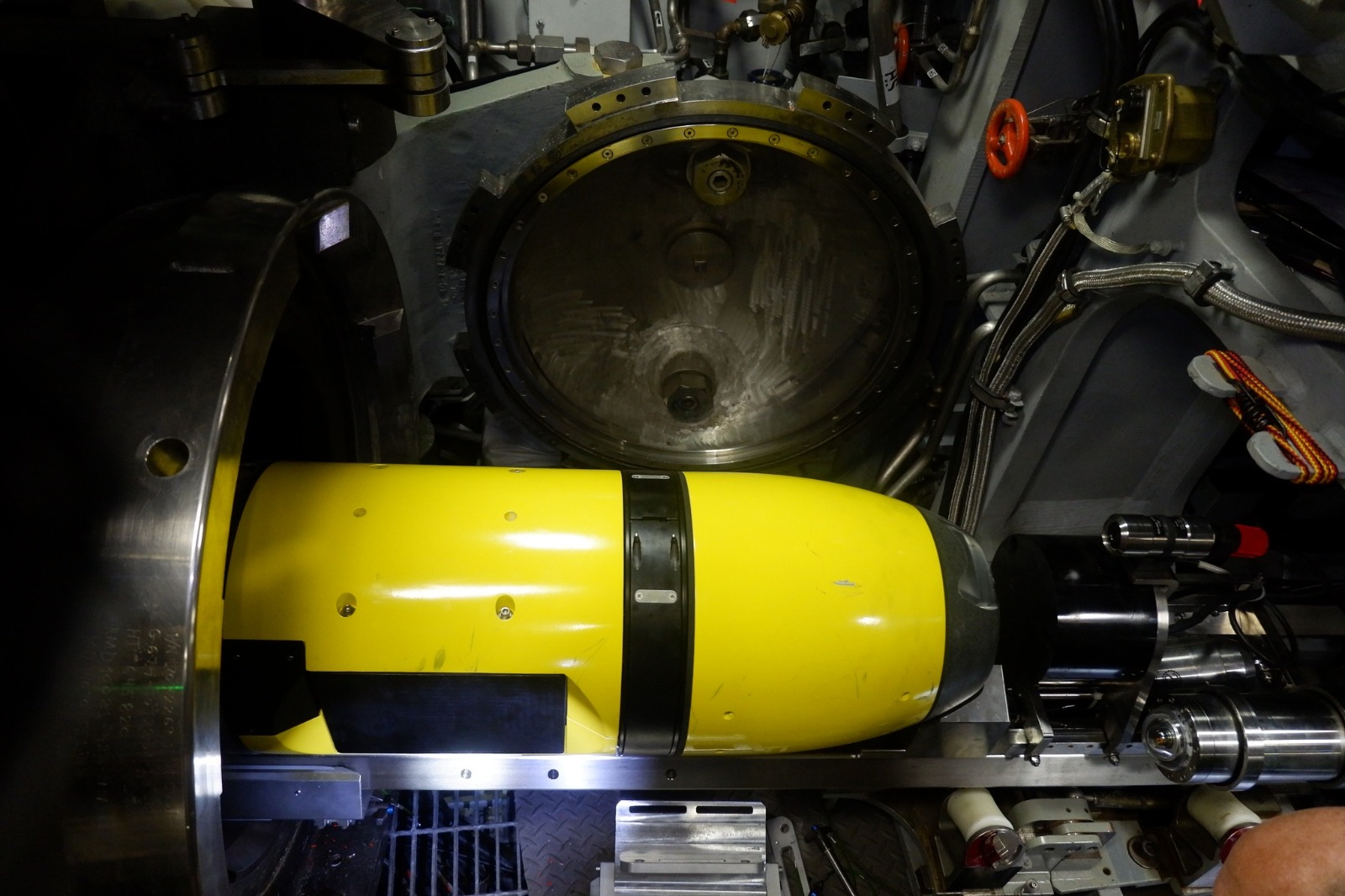The US Navy has announced that it has successfully carried out the first end-to-end test of a cutting-edge underwater drone named Yellow Moray, which can be launched and retrieved through a conventional submarine torpedo tube.
Ukrainian Pilots ‘Chicken Out’, Run For Survival Than Confront Russian Warplanes – Su-35 Aviator Says
In a Facebook post, the service also offered what seems to be the first glimpse of the new underwater drone. The successful test, executed last week, sets the stage for the service to roll out this capability starting next year potentially.
The Navy’s Submarine Readiness Squadron 32 highlighted that the Yellow Moray system is set to augment the US submarine force’s mission capabilities, bolstering the contribution of the US Navy’s submarines to the nation’s unified combatant commands around the globe.
Squadron 32 also mentioned that the uncrewed underwater vehicle (UUV) was launched and retrieved using the Virginia-class attack submarine USS Delaware (SSN 791).
Squadron 32 further added that the success of the Yellow Moray system’s recent test owes much to the committed efforts of the team members from the Oceanographic Systems Lab at the Woods Hole Oceanographic Institution, Naval Undersea Warfare Center (Code 45), American Systems, Commander, Submarine Forces Atlantic, UUVRON-1’s Flotilla-1, HII – Unmanned Systems Group, and the crews of USS Indiana (SSN 789) and USS Oregon (SSN 793), who played a vital role in earlier Yellow Moray testing.
Details regarding the Yellow Moray remain somewhat elusive. However, it is identified as a part of Huntington Ingalls Industries’ (HII) REMUS medium unmanned underwater vehicle (UUV) series.
In earlier discussions, the Navy has explored the prospect of developing a subvariant or derivative of the Razorback Unmanned Underwater Vehicle (UUV) explicitly designed for launch and recovery via torpedo tubes.

The Razorback, a variant of the REMUS 600, was initially conceived by Woods Hole’s Oceanographic Systems Lab and brought into existence by the firm Hydroid.
In parallel, the Navy actively employs another rendition derived from the REMUS 600, recognized as the Mk 18 Mod 2 Kingfish, further diversifying its underwater capabilities.
In November, Rear Adm. Rob Gaucher, currently serving as a special assistant to US Fleet Forces Command and nominated for Naval Submarine Forces commander, disclosed, “Submarine Force Atlantic conducted an effort called Yellow Moray, where it tested a Remus UUV from the defense contractor HII.”
He expressed optimism about the imminent deployment of a torpedo tube-launched and recovered Unmanned Underwater Vehicle (UUV) by the US Navy by the following year.
He further highlighted the significance of this development, stating that success in this area would mark a pivotal milestone, enabling the Navy to operate at scale and integrate these capabilities across its entire submarine fleet.
“There is a plan in place to deploy that in 2024. Now, will we get there? We still have some testing to do, but that’s our plan, and that’s what we’re shooting for,” Gaucher said.
REMUS 600 Autonomous Underwater Vehicle
The REMUS 600 autonomous underwater vehicle, crafted by Hydroid, a subsidiary of Kongsberg Maritime, in collaboration with the Office of Naval Research, stands as a strategic asset designed to support a spectrum of US Navy missions in deep oceanic and shallow waters.
Distinguished by its modular design, the REMUS 600 offers easy reconfiguration of its sensors to tailor to mission-specific requirements.
It boasts an impressive mission endurance of nearly 70 hours and speeds of up to 5 knots at depths reaching 600 meters.
REMUS 600 has a range of 286 nautical miles with an augmented payload. The user-friendly operation, like the smaller REMUS-100, allows control with a laptop with minimal auxiliary equipment.
With its torpedo-like shape, the standard REMUS 600 measures around 10.6 feet in length, 12.75 inches in diameter, and weighs 530 pounds.
Its highly modular design sets the stage for the Yellow Moray, a potential adaptation capable of fulfilling diverse roles, including acting as decoys.
Equipped with active acoustic emulators, these UUVs can simulate enemy sensors, potentially diverting threats away from friendly forces and gathering intelligence on opponents’ capabilities and tactics.
Nonetheless, the compatibility of all current and future Navy submarines with torpedo tubes provides a versatile deployment option for UUVs like the Yellow Moray.
This uncrewed capability also offers benefits such as enhanced situational awareness, increased safety by keeping the launching submarine at a distance from potential threats, and the ability to scout for mines or hazards in advance.
Moreover, the enduring capability of Yellow Morays, operational for 24 hours or longer, opens avenues for intelligence collection in restricted or sensitive areas.
Additionally, their deployment for surveys in hostile ports or beach areas before naval operations adds a layer of strategic advantage, showcasing the multifaceted utility of these advanced underwater vehicles.
- Contact the author at ashishmichel(at)gmail.com
- Follow EurAsian Times on Google News